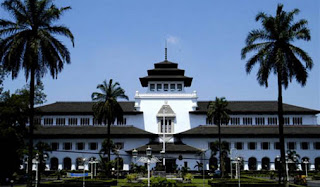West Java Culture
West Java is famous for its culture of Sundanese, Sundanese culture was once attached to the thick western Java community as a unique language, dance "jaipong" that are well known and "puppet show" which is also unique and admirable, are no less impressive is the "Angklung" This is a musical instrument made of bamboo that produces distinctive sound that is second to none, this is typical of the west Javanese culture.
Puppet show "Wayang Golek"
Marionette Puppet is a wooden puppet being played by certain characters in a puppet story. Played by a puppeteer that called " Dalang", controlling the various characters and character voices are played. Puppet show very liked by the Sundanese community in particular. Normally dipergelarkan puppet show at night until early morning.
Jaipong Dance
Jaipongan is a stream of dance that was born from the creativity of an artist from Bandung, Gugum Gumbira. As a social dance, dance Jaipong successfully developed by the artist dances are popular in the community of Sunda and highly favored by the people of West Java (in particular), and even popular until outside West Java.
Calling Jaipongan actually not just be reminiscent of the kind of attractive traditional Sundanese dance with dynamic motion. Hands, shoulders, and hips always been a dominant part in the pattern of the agile movement, accompanied by beating drums. Especially in female dancers, all of it is always accompanied with a sweet smile and cast in the eye. This is the kind of social dance in traditional Sundanese dance that emerged in the late 1970s that its popularity to this day still live in the community.
Angklung Musical Instruments
Angklung is a musical instrument made of bamboo, a unique, pleasant, attractive and easy to play. In addition to playing for instrumental songs, angklung can also be used as an instrument of accompaniment singer.
Since Angklung is an instrument or waditra art made from a special bamboo, which was discovered by Mr. Daeng Sutigna about 1938. When the initial use is still limited to the interests angklung local or traditional arts. However, due to the resulting sounds very sweet and also has local and international content such as sound a tone bertangga duremi fa so la the du and daminatilada, then angklung too fast growing, not only locally but also performed performed regionally, nationally and internationally. Even supposedly khabarnya Angklung show ever held in front of the State Leaders at the Asia Africa Conference in Bandung, Gedung Merdeka in 1955.
The number of players can play angklung to 50 people, even up to 100 people and can be combined with other musical instruments such as piano, organ, guitar, drums, and others. Aside from being a tool of art, angklung can also be used as souvenirs or fruits after hand decorated various other accessories.
After the death of artistic creations Angklung Daeng Sutigna forwarded by Mang Ujo and Erwin Anwar. Even Mang Ujo have made the center of creation and development of artistic creations angklung called 'Saung Angklung Mang Ujo "Padasuka Cicaheum located in Bandung. One program that he did specifically to keep the arts Angklung Angklung is introduced to students in schools, from kindergarten, through high school levels and even has become one of the curriculum at the local subjects.
Ketuk Tilu Dance
Ketuk Tilu Dance. there have been roughly in the era of 1809, which when made Grote Weg Pas, Ketuk Tilu Dance has been known by the wider community in West Java. As a traditional folk dance, Ketuk Tilu Dance has a unique makeup and clothing.
As the name implies Ketuk Tilu Dance comes from the name of an instrument or a traditional musical instrument called a "Ketuk" a number of 3 (three) pieces. As more of a dance music, percussion instruments Tilu played a mix of various musical instruments or traditional musical instrument which creates harmony typical song of a dance or singing.
Rampak Kendang
Drums is one traditional musical instruments played together other instruments, so as to create a harmonious music.
Subsequent developments, not only played drums with various other instruments, but played only in the sense of one type of musical instrument, but played in large quantities and create a rhythm of its own.
Hopefully this sunda cultural arts will remain stable with the times.














0 comments:
Post a Comment